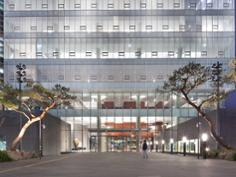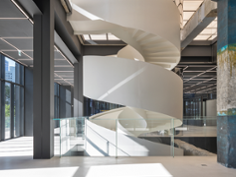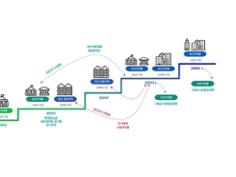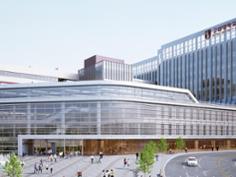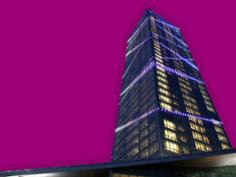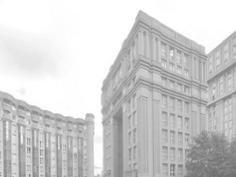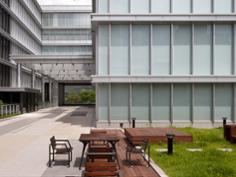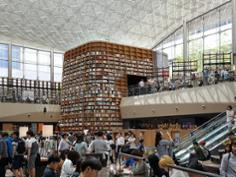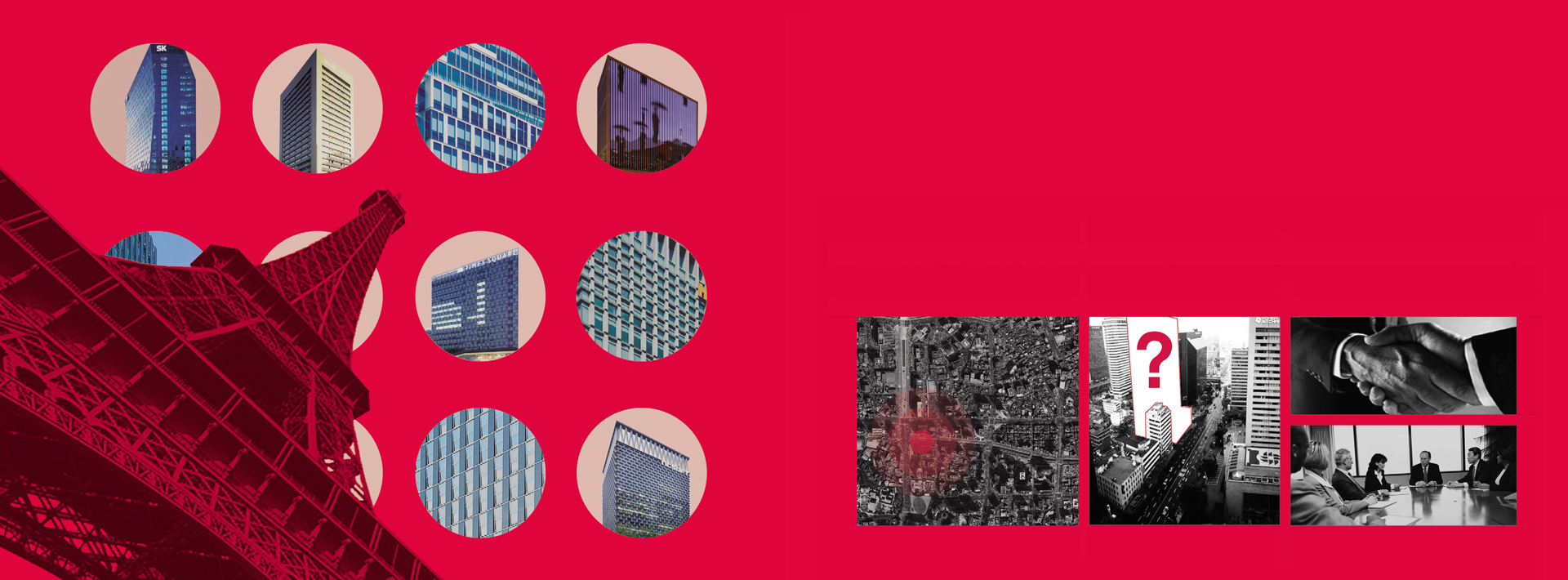
Corporate Identity and Headquarters
A Corporate Icon
The founding philosophy and culture of a corporation boil down to the corporate identity. A corporation's working on various businesses engenders a kind of spirit and business philosophy, naturally developing its own unique style over time. When designing the headquarters of this corporation, one should not just plan it as an office, but also embody the corporate vision and image into architecture. An office is a functional building whose program is clearly characterized and whose structure is simply made up of the core, the module, and the facades. However, a corporate headquarters requires the more value than the simple office has. In other words, it needs to be a corporate icon which expresses the unified corporate identity. Making the corporate headquarters as the corporate icon fit for its identity, after all, is the task of us architects.
What Buildings Do Corporations Want?
What buildings do corporations want indeed, when planning their own offices, i.e. the corporate headquarters? As people dream of something to have their own houses, so corporations dream of something with many expectations when building their own headquarters. It could be to represent the corporate image, or to foster and develop the corporation. Also, they must have as large expectations as the high cost of building. In consideration of functionality and efficiency necessary for an office where a number of employees will work, they hope the headquarters will accommodate the corporate culture programmatically and spatially, as well as completing the aesthetic beauty of the building. Furthermore, they want the building itself to become a brand representative of the company and stand out amongst other buildings.
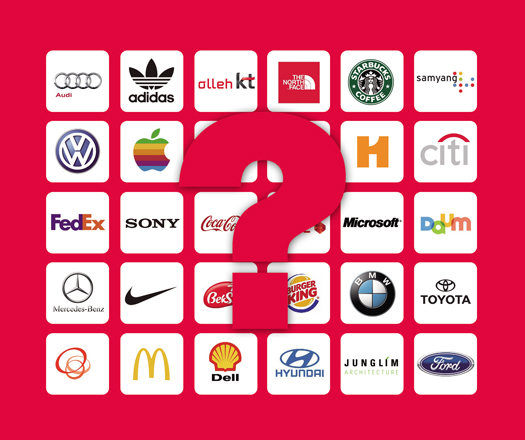
What Makes an Icon?
When it comes to the corporation Hyundai Group, mostly its headquarters comes across our minds; the vertical building in front of the Seoul Station is perceived as the symbolism of Daewoo Group. This is probably due to the influence of mass media, which always broadcast the news of a corporation by showing its headquarters so that both are recognized as one and the same in our memories. A new construction of the headquarters, however, will turn the situation around. Where can we find the clue of corporate symbolism and complete the design? Every corporation has a different purpose and culture. They may pursue functionality and rationality, or integrity and robustness, or free corporate culture and openness. We architects ask, explore, and ponder on what the corporate value is, what uniqueness the corporate culture has, what differences of working style it has, what products it makes, and even what future vision it has. After all, we figure out and analyze the corporate identity and incorporate its invisible values into a building.

Harmony between the Corporate Identity and the Urban Context
In the process of making the whole building design by taking the core values refined time and again from many ones, we manage to discover the best fit for the corporate image. It can come unexpectedly from the inspiration the site gives or the surrounding context, or the corporate image becoming a simple figure. The corporate logos, colors, or products may provide primary clues, and the core corporate values serve as the compass in designing a building. Half of the design is inspired by the site and nature, and the other half is filled with the architect's imagination. The clues provided by the site may come from good landscape and natural environment, materials and materiality, surrounding buildings, or the constraints of building codes. When the client consists of more-than-one corporations, their common features and the clues from the site may become critical factors of making the best fit between the building and the site and as if they met the true owners. Eventually, the corporate icon becomes completed only when the corporate identity and the urban context are conflated in harmony.
An Icon Interacting with the City
Some buildings or designs are often called "eye-catching," which means they are unique and full of individual characters. The term "icon" also reflects an egocentric thinking. If a headquarters building completed as a corporate icon to effectively reflect the corporate identity is just too eye-catching and not in harmony with the surroundings, it may be none other than superficial and unable to blend in the city. Be a high-quality design as it may, a building which never interacts and exchanges with the surroundings is unlikely to be loved. How can a building interact with the city? Simply put, it can do so when it becomes loved by people. It can do so when it provides open outdoor space so as for people to have easy access and a comfortable rest. Better still, when its interior is finished with such materials relevant to the surrounding context as people can feel familiar with and includes an open program helpful and necessary for the neighborhood that enables interaction with the neighbors. On top of that, an environmentally friendly space in consideration of occupants can make the building loved by all including users, residents, and visitors. Rather than consider or change great things, we should make architecture attentive and considerate that takes care of the public.
The Icon of the City, and the Icon of Us
Throughout Junglim Architecture's history of office design, we can discover the buildings mainly have more of conservative and serene designs. It seems likely that Junglim could have designed at least one showy building, but it did not. Instead, the company has continued to design office projects with architectural values. Why has it done so? This is because Junglim's works are manifested from its core values, just as the design of headquarters stems from the corporate identity; because our design starts from the "universally-valid philosophy and sound architecture" and makes more pragmatic buildings faithful to the basics by coordinating opinions through organizational design. It is a common sense to consider occupant-based orientation, environment and energy even for the design of curtain-wall buildings which look clean and cool; also, designing sustainable buildings stands to reason because we know temporary vogues are to be easily forgotten soon, even though it seems attractive to use radical and fashionable formal language. The philosophy of universal validity perhaps begins with the attitude of being faithful to the basics of Righteous Life, a kind of ethics textbooks for elementary school, i.e. implementing the common sense everyone knows but does not observe. We hope such a building which is not easily made, but once made, lasts long and becomes loved by people, the true icon of the city which interacts with it, the building whose value is recognized in the as-built and post-occupancy phases, will be the icon of "us."
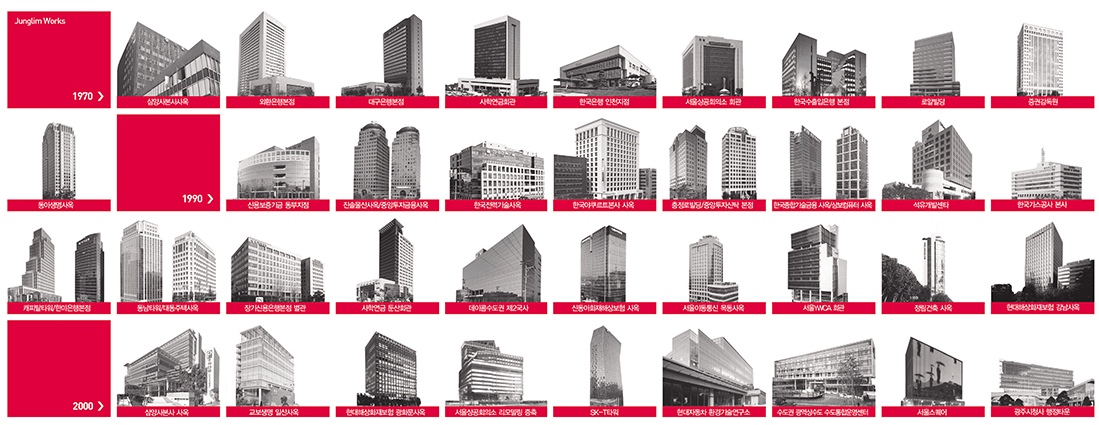
Excerpts from "Workplace and Identity?", Junglim Architecture Works 2012

